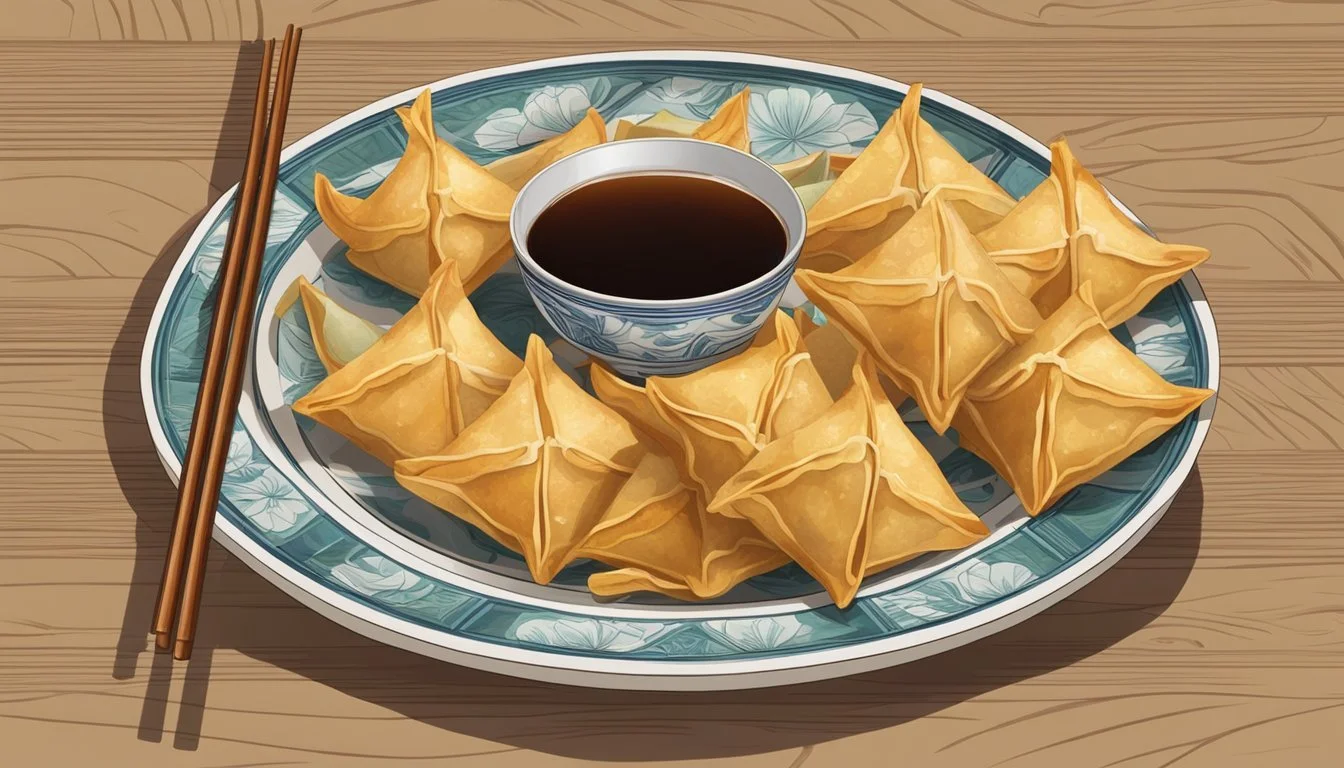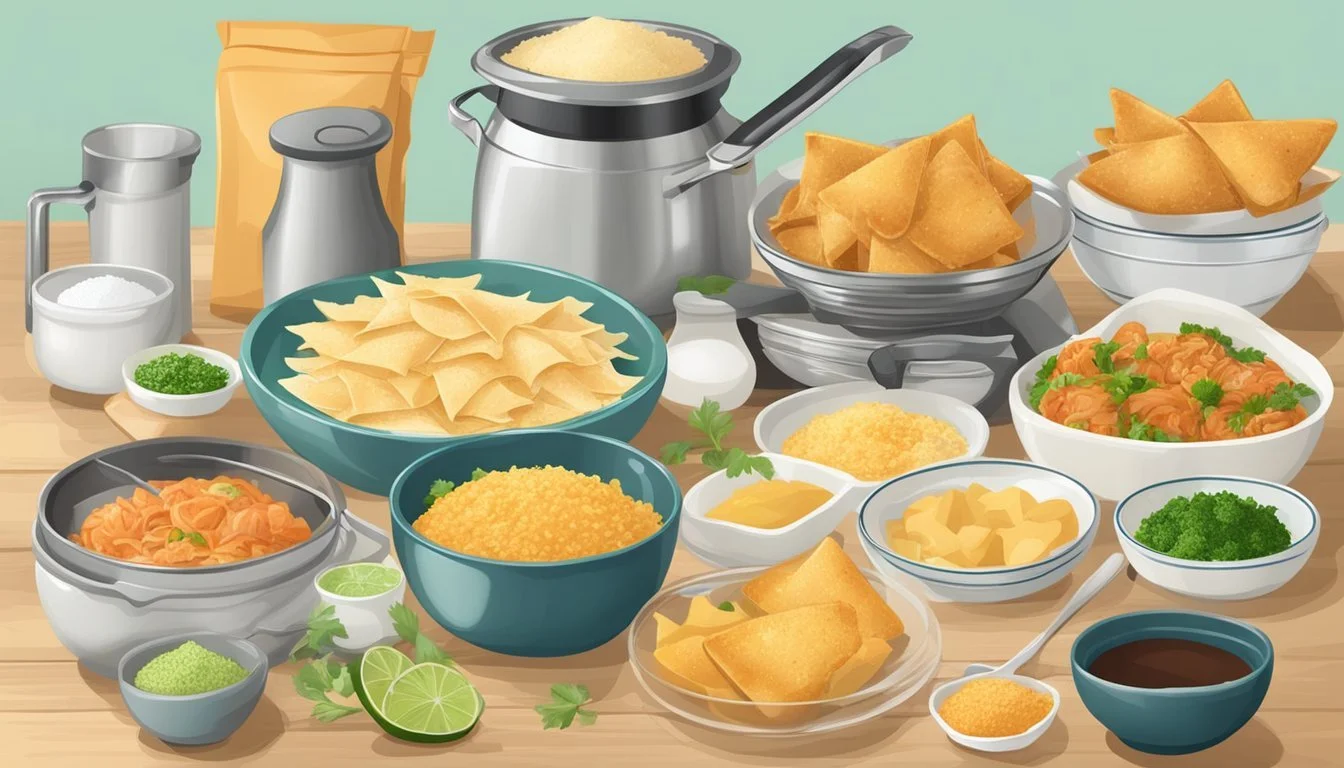Are Crab Rangoons Gluten-Free?
Unveiling the Truth About This Popular Appetizer
Crab (What wine goes well with crab?) rangoon, a popular appetizer in American Chinese restaurants, traditionally consists of a filling made with crab meat, cream cheese, and seasonings encased in a wheat-based wrapper and deep-fried until crispy. This flavorful morsel is often served with a dipping sauce, becoming a staple at many dining establishments for its creamy interior and crunchy exterior. However, for individuals with celiac disease or gluten sensitivity, the conventional preparation of crab rangoon poses a dietary challenge due to the presence of gluten in the wheat flour used to create the wrappers.
While the classic crab rangoon is not gluten-free, adaptations to the recipe can accommodate a gluten-free diet. Replacements for the wheat-based wonton wrappers are key to making this appetizer safe for those avoiding gluten. Rice paper or gluten-free wonton wrappers sourced from specialty stores or homemade with gluten-free flour blends can be used to recreate the dish while adhering to dietary restrictions. Care must be taken to ensure that all ingredients, including the imitation crab often used in recipes, are free of gluten-containing additives.
The increasing awareness and demand for gluten-free options have encouraged both home cooks and commercial establishments to modify recipes for wider dietary inclusivity. As a result, gluten-free crab rangoon is becoming more accessible to those who wish to enjoy this dish without the gluten. By being mindful of ingredients and cross-contamination, it is possible to prepare and enjoy this beloved appetizer while maintaining a gluten-free diet.
What Are Crab Rangoons?
Crab Rangoons are a distinctly American appetizer with Asian cuisine-inspired features, primarily recognized for their crispy wonton exterior and savory cream cheese and crab meat filling.
Origins and Popularity
Crab Rangoon has its roots in American Chinese cuisine and gained popularity in the US as a staple offering at many Chinese-themed restaurants. Contrary to its name, it doesn't originate from Rangoon (now Yangon), but was likely created to cater to Western tastes with an exotic appeal.
Ingredients Overview
Central to Crab Rangoon is a rich filling typically made from cream cheese, crab meat or imitation crab, and various seasonings such as garlic, onions or green onions, and sometimes soy sauce or Worcestershire sauce. This flavorful mixture is then encased in wonton wrappers before being fried to a golden brown.
Gluten Presence in Crab Rangoons
Traditional Crab Rangoon recipes utilize wonton wrappers that contain wheat flour, a primary source of gluten. Due to this, conventional Crab Rangoons are not gluten-free. However, some modern adaptations of the recipe use gluten-free alternatives for wonton wrappers to cater to dietary restrictions.
Gluten-Free Alternatives
Creating gluten-free crab rangoons is achievable with the right substitutions and preparation methods. The following sections provide direction on adapting this popular dish for a gluten-free diet.
Gluten-Free Ingredients
The foundation of gluten-free crab rangoons lies in the selection of an appropriate wrapper. Traditional wonton wrappers contain wheat, but alternatives such as rice paper or wrappers made with tapioca flour can be used as gluten-free options. For the filling, one can opt for gluten-free imitation crab or real crab meat. Instead of regular cream cheese, almond milk cream cheese can be a suitable dairy-free and gluten-free alternative.
Ingredients for Gluten-free Crab Rangoon:
Rice paper or tapioca flour wonton wrappers
Gluten-free imitation crab or lump crab
Almond milk cream cheese
Substituting Crab Meat
When considering the protein component, it's important to verify that the imitation crab (often referred to as "krab" or kanimi) is gluten-free, as many brands contain wheat fillers. Alternatively, using fresh lump crab meat ensures a gluten-free filling and imparts a more authentic flavor to the rangoons. Seafarer Treasures is a known brand that offers gluten-free imitation crab options.
Safe Preparation Practices
Regardless of whether they are fried or baked, cooking gluten-free crab rangoons requires caution to prevent cross-contamination. Use clean utensils and separate oil if frying. Coconut oil is a popular choice for frying due to its stability at high temperatures. For a healthier version, an air fryer can be employed, giving the rangoons a crispy texture without the need for deep-frying. Baking in the oven is another alternative, offering a crisp texture with less oil usage.
Cooking Methods:
Frying in coconut oil
Baking
Air frying
By adhering to these guidelines, individuals on a gluten-free diet can safely enjoy crab rangoons.
Gluten-Free Cooking Methods
When preparing gluten-free crab rangoons, the cooking method can greatly influence the texture and flavor of the appetizer. Choosing the right technique is essential for achieving the desired crispiness without compromising the gluten-free integrity.
Baking vs Frying
Baking: Baking is a healthier alternative to frying, as it typically requires less oil. For gluten-free crab rangoons, one can preheat the oven to a high temperature — around 400°F (200°C) — to ensure the wrappers become crispy. Arranging the crab rangoons on a baking sheet lined with parchment paper can prevent sticking, and a light brush of oil on the surface can help achieve a golden finish.
Frying: For those who prefer the traditional texture of deep-fried appetizers (What wine goes well with appetizers?), utilizing a gluten-free batter and a safe frying oil is crucial. Coconut oil is a popular choice for frying due to its high smoke point, ensuring that the oil does not break down and contaminate the gluten-free crab rangoons. A deep fryer or wok can be used, with the oil heated to around 350°F (175°C) before adding the rangoons. They should be fried until golden brown, typically taking about 2 minutes per side.
Alternative Frying Techniques
Deep Fryer: A deep fryer provides a controlled frying environment, which is especially beneficial for delicate gluten-free batters. Maintaining the oil temperature is easier, reducing the risk of absorbing too much oil or burning. When using a deep fryer, one should not overload the basket as this can lead to uneven cooking and reduced heat, affecting the gluten-free crab rangoon's texture.
Air Fryer: An air fryer is an excellent alternative for those seeking a fried texture with minimal oil. It circulates hot air around the gluten-free crab rangoons, crisping the exterior without the need for submersion in oil. Preheat the air fryer to approximately 375°F (190°C) and cook in small batches to ensure proper air circulation for even cooking. This method can yield a satisfyingly crispy appetizer with less oil absorption compared to traditional frying methods.
Nutritional Information
Crab Rangoons, whether gluten-free or not, are a popular appetizer and here we'll focus on the nutritional information concerning the gluten-free variety. This section provides details on calorie count, macronutrient composition, and considerations for individuals with dietary restrictions looking for a gluten-free option.
Caloric Content
Gluten-free Crab Rangoons typically range in calories, depending on the specific ingredients used in the recipe as substitutions for traditional wheat-based wrappers affect this. On average, one can expect a single Gluten-free Crab Rangoon to have approximately:
Calories: 50-70 per piece
Macronutrients Breakdown
The macronutrient profile of Gluten-free Crab Rangoons is similar to that of the traditional ones, with changes depending on the alternative flours and fillers used. A typical breakdown per piece may include:
Protein: 2-3 grams
Fat: 3-5 grams
Carbohydrates: 5-10 grams, though low-carb options may be less
It is important to consider that crab meat is low in fat and carbohydrates but rich in protein. The use of cream cheese increases fat content, while the gluten-free wrappers usually influence the carbohydrate value.
Considerations for Dietary Restrictions
Gluten-free Crab Rangoons cater to those avoiding gluten, but there are other dietary considerations:
Dairy-Free: Recipes may use dairy-free cream cheese to accommodate lactose intolerance.
Gluten-Free: Ensure all ingredients, such as sauces and fillings, are verified as gluten-free.
Low Carb: For a low-carb version, one might opt for a filling higher in crab meat and a wrapper with lower carbohydrates.
While gluten-free options can align with dietary restrictions, portion control remains essential for caloric management. It's also wise to check for potential allergens and cross-contamination practices if dietary restrictions are due to health conditions like celiac disease.
Serving and Dipping Sauces
When presenting gluten-free crab rangoons as an appetizer, the choice of dipping sauce can greatly enhance their flavor. This section explores a variety of gluten-free sauces that can be paired with the rangoon, along with simple homemade recipes and pairing suggestions for a delicious experience.
Gluten-Free Sauce Options
For those with gluten sensitivity, traditional soy sauce is not an option due to its wheat content. Instead, they can opt for tamari, which is a wheat-free soy sauce, or coconut aminos as a soy-free alternative. Both provide a similar umami depth to the sauces commonly served with crab rangoon. Additionally, sweet and sour sauce and sweet chili sauce are popular choices that are commonly available in gluten-free versions. Ensure that labels are checked for any hidden gluten-containing ingredients.
Homemade Sauce Recipes
Creating one's own dipping sauce not only ensures it's gluten-free but also allows for customization to personal taste. Here are two simple recipes:
Sweet and Sour Sauce:
Ingredients: 1/4 cup of rice vinegar, 1/4 cup of water, 2 tablespoons of ketchup, 1 tablespoon of cornstarch, and 3 tablespoons of sugar.
Preparation: Combine all ingredients in a saucepan, whisking until smooth. Cook on medium heat until the sauce thickens.
Sesame Soy Dipping Sauce:
Ingredients: 1/4 cup of tamari, 1/4 cup of water, 1 tablespoon of sesame oil, and 1/2 teaspoon of garlic powder.
Preparation: Mix ingredients in a bowl and whisk thoroughly for a flavorful dipping sauce.
Pairing Suggestions
The choice of sauce can complement the flavors present in crab rangoon. For instance:
Tamari-based sauces complement the imitation crab's salty flavors.
Sweet and sour sauces add a tangy contrast to the creamy filling.
Sweet chili sauce offers a spicy kick that enlivens the appetizer.
Ensure the chosen sauce pairs well with the rangoon's flavor profile for a harmonious dining experience.
Final Thoughts on Gluten-Free Crab Rangoons
While traditional crab rangoons are not safe for individuals with celiac disease or gluten sensitivities due to the wheat-based wrappers, there's good news for enthusiasts who love this delicious appetizer. Gluten-free crab rangoons are possible by substituting the typical wrappers with gluten-free alternatives like gluten-free wonton wrappers or rice paper. By switching to these alternatives, gluten-free crab rangoons become an enjoyable treat without the proliferation of gluten-related concerns.
Here is what to remember when preparing gluten-free crab rangoons:
Ingredients: Select gluten-free wrappers, and ensure all other ingredients, such as imitation crab and cream cheese, are certified gluten-free.
Preparation: Cross-contamination can occur in kitchens where gluten is present. Use clean utensils, workspaces, and oils if you fry the rangoons.
For those with celiac, it is crucial to read labels and be vigilant about the possibility of cross-contamination. The following table highlights the main components needed for a safer gluten-free experience:
Component Consideration for Celiac Safe Option Wrappers Use certified gluten-free wonton wrappers or rice paper. Filling Ensure that all filling ingredients, including crab, are gluten-free. Cooking Use separate utensils and oil to prevent cross-contamination.
Finally, making crab rangoons gluten-free allows those with dietary restrictions to savor this popular offering without compromising their health and well-being. With careful attention to detail and the use of gluten-free products, one can indulge in crab rangoons with ease and enjoyment, confidently maintaining their dietary needs.






